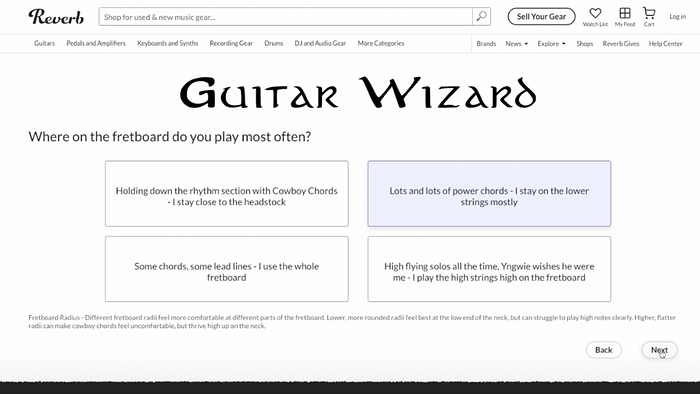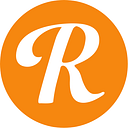Hacking From Afar: How We Organized a Remote Hackathon
Reverb helps music makers of all levels connect with sellers all over the world ranging from small businesses, family-owned shops, and individuals to the world’s largest musical instrument retailers and well-known musicians.

After a four-year hiatus from our last hackathon, Reverb scheduled a week-long “Code Jam” to give people from across the company a chance to pitch their ideas, join a project team, and work together on potential solutions. This article recaps why the hackathon was important, how we conducted it, and what people experienced.
Goals & Challenges
The main goal for Code Jam was to promote creativity, collaboration, and energy — and encourage people to incorporate what they experienced on an ongoing basis at work. We wanted to demonstrate to ourselves that we have all the tools and skills to create a rich, dynamic and collaborative environment when working remotely, and that we can support that style of working throughout the year.
Remote working offers flexibility and other benefits, but it also presents challenges when trying to find ways to connect with colleagues, collaborate on projects, and discover innovative solutions. Code Jam was designed to demonstrate how easy it can be to share ideas, collaborate across organizations and teams, and suggest creative ideas that help our communities — both internally for our colleagues as well as externally for our buyers and sellers. Additionally, we wanted to take a break from our daily routines and have a little fun.
When it came to organizing the Code Jam, the challenges we faced related to ensuring how to be inclusive across teams and time zones, all while keeping things fun and self-driven. In particular, we wanted non-engineering staff to feel welcome to share their project ideas and join teams. Plus, many new people have joined Reverb since the pandemic started and haven’t had the chance to meet many people in person. We now work in a hybrid environment, where many more people work remotely compared to the last time we held a hackathon. To make sure everyone felt included, we decided to work asynchronously through collaborative documents, pre-recorded video submissions, while relying on meetings to connect in groups on key dates.
How We Organized Our Code Jam

We set aside a week so we could all focus on building things that inspired us, and while the Code Jam itself only lasted a week, we spent several weeks preparing for it. By having the ideation period start ahead of time, people had the chance to share their project ideas via a simple spreadsheet, talk to colleagues about potential ideas/pain points (on calls or by using the new Slack channel we launched), and organize into teams. We also used this time to build excitement leading up to the kick off and make sure non-engineers had time to better understand the process, project ideas, and how to join a team.
One of our efforts to generate excitement was a live event where people could virtually pitch their project idea, which had to fit within one of two categories:
- Enhancements for our marketplace community — projects that will benefit Reverb users within the core flows for buying and selling.
- Improvements for Reverb employees — these projects can be internal programs, processes or tools that make our lives easier.
We didn’t want to be too strict, but having categories and some guidelines helped make sure things ran smoothly. Inclusivity was a core principle of Code Jam and we encouraged participants to:
- Welcome people to a project team and create a safe space where they can learn and grow.
- Remember that this is a time to try things out and learn with help from others, which is why people at all levels of experience were encouraged to participate.
- Listen actively and stay open to ideas from teammates.
- Push the boundaries of what we can achieve, with the full understanding and acceptance of the fact we may fail, possibly spectacularly!
There were also a few guidelines to protect our code health during the event:
- People could work across any part of our codebases — anything was fair game.
- We discouraged user facing work from happening in production to limit risk.
- Teams were responsible for the full lifecycle of their code, especially code cleanup after the event.
Results

Following the pitch meeting, the teams got down to business and started working on their projects. Slack buzzed with activity as people reached out to each other for support. Some teams needed help with authentication for a system, or an engineer went looking for more information on how to list offers or use a particular library. Many people scheduled pairing sessions to work together and help each other out. Teams kept tabs on each other’s progress, and there was a sense of excitement building as the submission deadline approached.
The project work culminated when team captains uploaded their recorded demos to a shared drive. The demos were recorded in different ways and varied in length, but all of them highlighted what each team worked on and any lessons learned. This allowed people from all time zones to participate. To celebrate all the creativity sparked by the Code Jam, we held a virtual “watch party” where demos from each project were shown and then voting took place.
While not all of the projects can be shared publicly, some fan favorites include:
- An online “Guitar Wizard” questionnaire for gear recommendations
- A new hashing technique to catalog the same images in different dimensions
- An AI chat tool to improve gear recommendations
- Automatic data import integration into figma design files for designers
- Customized price drop notifications
- Artists Collections — a visually cool exploration of the music gear owned by someone’s favorite artists/bands

Over 80 people participated in the hackathon, representing Engineering, Product, Marketing, Customer Experience and Finance. We conducted a survey to measure the effectiveness of different activities and the results showed that the event was extremely effective in sparking innovation and creativity, making an impact, and having fun outside of our day-to-day routine.
Participants suggested improvements such as adding more time to consider project ideas and to prepare work on them as well as more time for coding — actionable feedback that we’re using to formulate plans for future Code Jams. There was also a lot of enthusiasm and consideration for ways we could use the collaborative spark to improve our culture within the company.
As our Chief Technology Officer Jason Wain noted in a follow up email:
“Great technology teams have great success when those closest to the technology are propelling the team forward. They feel ownership of the problems they are solving and turn that ownership into passion.…Our job as engineers is not just to write code and close tickets. It’s to realize Reverb’s competitive advantage as a technology company through a technology-centric way of working.”
Or, as one of our participants put it:
“Code Jam is my Super Bowl, and I love it a lot. It reminds me of the things I like about working here.”
Interested in solving challenges like this one and making the world more musical? We’re hiring! Visit Reverb Careers to see open positions and learn more about our team, values, and benefits.
